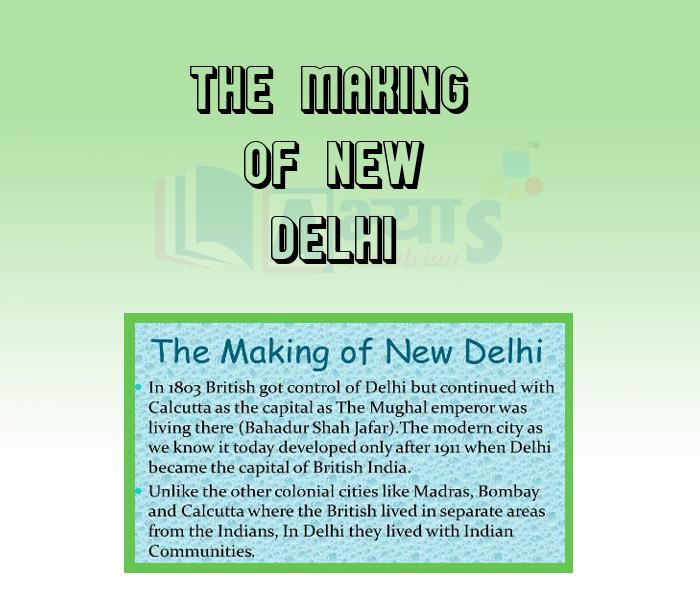The Making of New Delhi












The Making of New Delhi
The Making of New Delhi : The foundation stone of New Delhi was laid by Emperor George V during the Delhi Durbar of 1911. It was designed by British architects Sir Edwin Lutyens and Sir Herbert Baker. The new capital was inaugurated on 13 February 1931, by Viceroy and Governor-General Lord Irwin.
Delhi has a long history . It is believed that the town was known as Indraprastha during the times of epic Mahabharata.
The canal in Chandni Chowk was filled up and trees were cut to cater to increasing and sewerage of the walled city. Earlier, the drinking water was supplied to the old city from Ali Mardan canal. The British shifted their capital from Calcutta to Delhi in 1911. The Delhi Durbar (for king George V) changed the look of the city .Civil lines area (now Delhi university and old Secretariat) were set up.
Master plans for Delhi provides a basic policy frame for guiding Delhi's Development.
British shifted their capital from Calcutta to New Delhi in ____________ . | |||
| Right Option : D | |||
| View Explanation | |||
In _______, the British Gained control of Delhi after defeating the Marathas. | |||
| Right Option : D | |||
| View Explanation | |||
The largest and grandest mosque in Delhi is : | |||
| Right Option : A | |||
| View Explanation | |||
Students / Parents Reviews [10]
My experience with Abhyas academy is very good. I did not think that my every subject coming here will be so strong. The main thing is that the online tests had made me learn here more things.

Hiya Gupta
8thIt was good as the experience because as we had come here we had been improved in a such envirnment created here.Extra is taught which is beneficial for future.

Eshan Arora
8thIt has a great methodology. Students here can get analysis to their test quickly.We can learn easily through PPTs and the testing methods are good. We know that where we have to practice

Barkha Arora
10thAbhyas Methodology is very good. It is based on according to student and each child manages accordingly to its properly. Methodology has improved the abilities of students to shine them in future.

Manish Kumar
10thIt was a good experience with Abhyas Academy. I even faced problems in starting but slowly and steadily overcomed. Especially reasoning classes helped me a lot.

Cheshta
10thI have spent a wonderful time in Abhyas academy. It has made my reasoning more apt, English more stronger and Maths an interesting subject for me. It has given me a habbit of self studying

Yatharthi Sharma
10thAbhyas is a complete education Institute. Here extreme care is taken by teacher with the help of regular exam. Extra classes also conducted by the institute, if the student is weak.

Om Umang
10thOne of the best institutes to develope a child interest in studies.Provides SST and English knowledge also unlike other institutes. Teachers are co operative and friendly online tests andPPT develope practical knowledge also.

Aman Kumar Shrivastava
10thAbout Abhyas metholodology the teachers are very nice and hardworking toward students.The Centre Head Mrs Anu Sethi is also a brilliant teacher.Abhyas has taught me how to overcome problems and has always taken my doubts and suppoeted me.

Shreya Shrivastava
8thMy experience was very good with Abhyas academy. I am studying here from 6th class and I am satisfied by its results in my life. I improved a lot here ahead of school syllabus.
